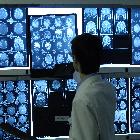Picture archiving and communication system
Picture archiving and communication system (PACS) is a modality of imaging technology which helps in image transmission from the site of image acquisition to multiple physically-disparate locations. This technology not only is economical (film-less department), but also convenient to access multiple modalities (radiographs, CT, MR, ultrasound etc.) simultaneously at multiple locations within hospitals or across the globe.
Basic structure
PACS is usually an integration of:
Importance
A patient may undergo a battery of radiological investigations at separate locations, which need to be accessed by multiple radiologists and multiple treating physicians in different locations (sometimes across the globe). A system for rapid transfer of images, while maintaining the original quality is a vital, albeit complex technological need.
Also, hard-copy films are difficult to store and archive, and the quality deteriorates over time (although electronic media are not immune to the latter issue).
Limitations
Capital cost was a major limitation in the early years but entry of multiple vendors into the market, as well as the geometric increase in processing power and digital storage has significantly brought expense down. The major limitation of PACS or teleradiology devices, is the quality of images, which may be compromised by suboptimal resolution display monitors at different locations. Also, any technical failure, and improper back-up storage may hamper the data retrieval and carries the - rare - risk of massive data loss.
Siehe auch:

 Assoziationen und Differentialdiagnosen zu Picture archiving and communication system (PACS):
Assoziationen und Differentialdiagnosen zu Picture archiving and communication system (PACS):
